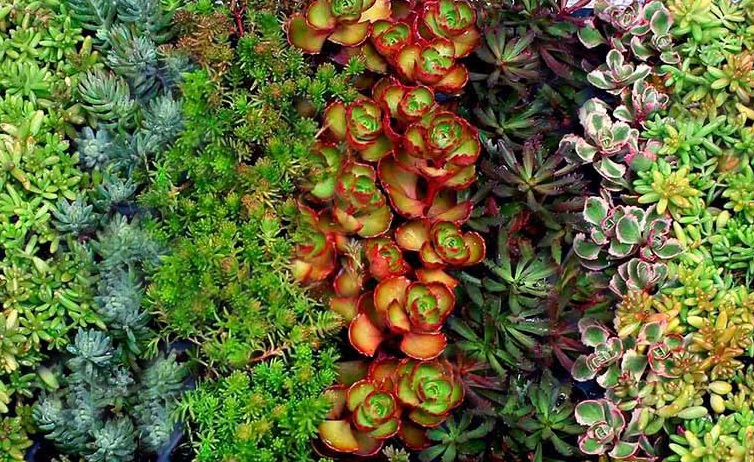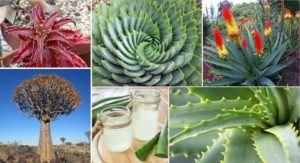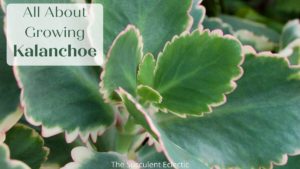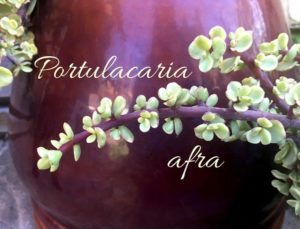Sedum (SEE-dum) is a large and varied genus in the Crassulaceae family that encompasses more than 450 species. Sedum varieties are native throughout the northern hemisphere, Africa and South America. This genus of succulents is remarkable for its diversity of color, form, texture and even hardiness. Vibrant foliage and fanciful blooms abound. Some sedum are hardy to the bitterly cold climes of zone 3, while others cannot tolerate a hard frost. Some are just a couple of inches tall, making an excellent ground cover, while others reach 2-3 feet and are used as border plants. Still others trail and make dramatic additions to hanging baskets. Let’s take a closer look at sedum and their care.
All About Growing Sedum
In this Post We'll Cover:
{Please note, some links in this post may be affiliate links to sites that pay me a small commission if you click on the link and make a purchase. This commission is at absolutely no cost to you. I only recommend products and companies that I have worked with and truly love! ~Kat}
Sedum and CAM PhotosynthesisPhotosynthesis (FO-to-SIN-thuh-sis) is the process plants us... More
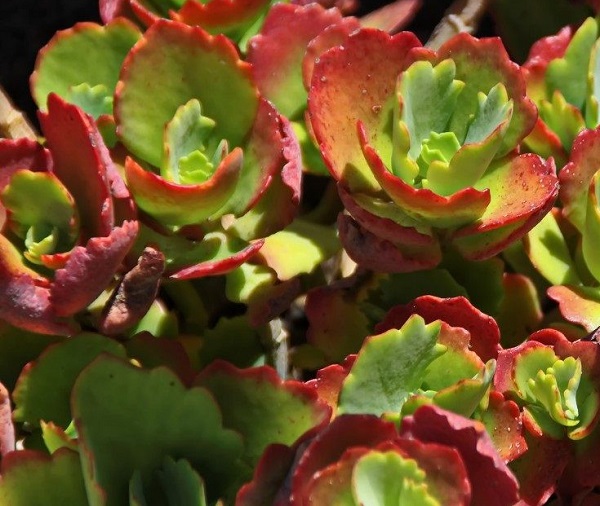
Within the diversity among sedum, some qualities are consistent. Like all succulents, sedum store water in their foliage for use during times of drought. They also employ a more specialized strategy for dealing with hot, dry climates. Like crassula, sedum respireTo respire - Respiration is the process where living beings,... More only at night, to avoid loss of moisture during the heat of the day. They alternate times for photosynthesis during the day, with transpirationTranspiration is the process of water movement through plant... More at night. This is a process called Crassulacean Acid Metabolism, or CAM photosynthesis.
The Versatility of Sedum Varieties
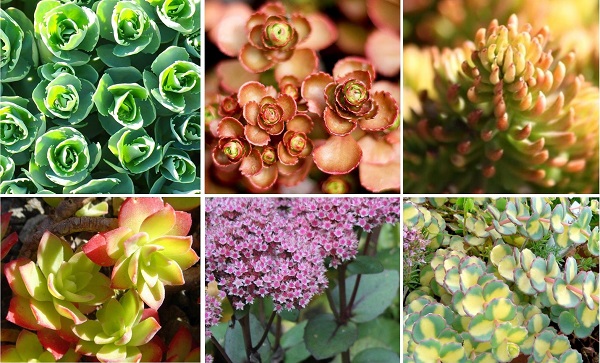
Sedum are often divided in the tall, border varieties that grow 1-3 feet tall, and the groundcover sedum. In fact, horticulturalists and taxonomists have recently reclassified the border sedums as Hylotelephium – separate from the sedum genus. But this focus on size seems to be missing the point. Certainly, if you are looking for a groundcover, or specifically for a border plant, knowing the plant’s mature size is important. But I feel that dividing sedum into cold-hardy varieties and those tender to frost is more valuable to the home gardener. Before knowing where in your garden to plant, don’t you want to know if it will survive? Many of the tallest and the smallest sedum thrive in climates with snow and sleet. Let’s start with them.
Cold Hardy Border Sedum Plants
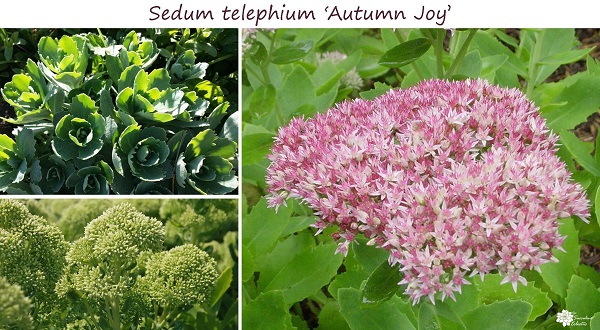
Tall sedum varieties like sedum spectabile are excellent in mixed borders, planted with other varieties, ornamental grasses and other flowering perennials. They grow from 1-3 feet tall, are cold hardy to zone 5 and sometimes colder, and sport spectacular bloom clusters that last for a long time on the plant or in a vase. Sedum telephium Autumn Joy (Hylotelephium ‘Herbstrfreude’) is perhaps the most popular of all the border sedum varieties, with its 3 seasons of beauty. Whorls of green leaves have a loose, rosette appeal in early spring. By early summer, plentiful buds appear, clustered tightly like ornamental broccoli atop 24″ stems. Late summer sees pink blooms opening, beckoning to the local butterflies. In autumn, these long-lasting blooms turn a rich, rusty copper.
Cold Hardy Sedum Groundcover Stonecrop
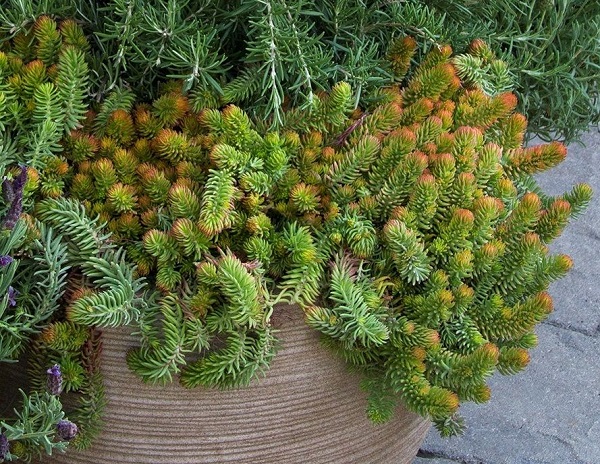
Cold-hardy, low-growing sedum is so low-maintenance and easy to care for, it has earned the common name of “stonecrop”. Some are just an inch tall, while others form low, soft mounds up to 6 inches tall. These sedum plant varieties typically produce finely textured leaves and a rich variety of colors. Sedum reflexum Angelina is one of many very popular varieties, with its soft, needle-like foliage that changes from chartreuse to gold, to green and rust. Stonecrop sedum thrive in rock gardens, as a groundcover, in planters and as roofing!
Sedum Stonecrop in Green Roofing
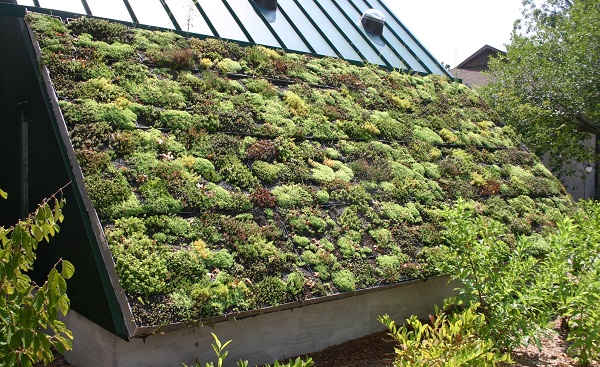
Sedum are cherished the world over for their bright foliage, long-lasting blooms and easy care nature. Some varieties have been used as a food source, others are integral in beauty products. Sedum are invaluable in the growing movement toward “green roofs”, where they are often interplanted with sempervivum. Green roofs or living roofs provide tremendous insulation, thereby cutting energy use and costs. They absorb rainwater, create habitat and support for wildlife and mitigate the heat island effect in cities. There is also some evidence and anecdote that they help to alleviate stress.
Tender Sedum
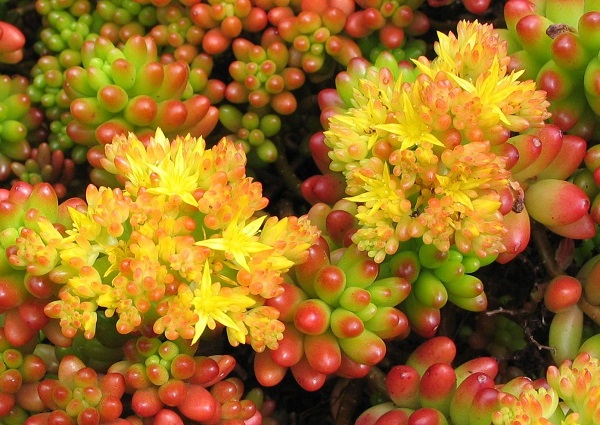
When you are shopping for a sedum plant, don’t fall in love with their whimsical charms until you learn whether it is suited to your climate. Although many varieties of sedum are hardy to zone 3, there is a large subset of varieties that are not hardy below zone 9! These tender sedum varieties are typically small-leafed, with vivid foliage and bright, colorful flowers that are highly appealing to butterflies. They are excellent for use in rock gardens and containers, happily growing outdoors year round in very mild climates. They will over-winter indoors where winter is cold. Just provide as much light as possible.
If you do fall for a charmer like this Sedum rubrotinctum Jelly Bean plant only to find it is unsuitable for your climate – don’t despair! This genus is so expansive, there is likely to be a cold-hardy variety with similar appeal. In this case, check out Sedum album varieties for the look of the jelly bean plants but with serious cold-hardiness, too.
Sedum Flower
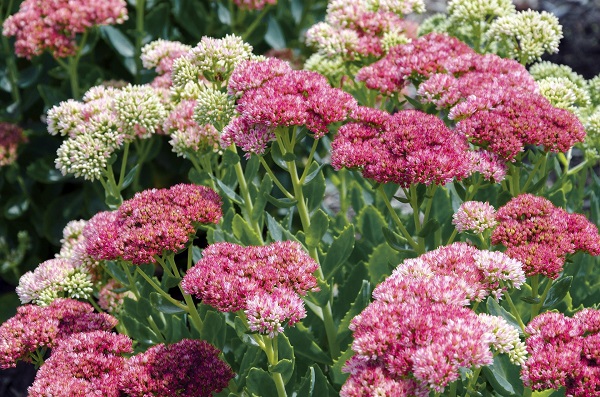
All sedum varieties, both tall and small, hardy and tender, produce wonderfully long-lasting blooms. They are a good source of nectar for butterflies and bees, and lend colorful texture to the garden. Bloom times vary widely, and it is possible to plant a garden that ensures sedums are in bloom nearly all year round. The flowering stems of the tall, border varieties make excellent cut flowers with a good vase life.
Sedum Propagation
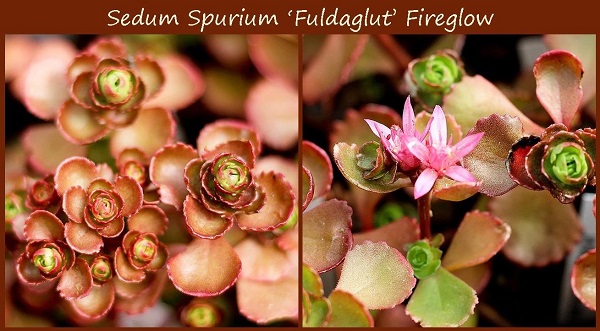
Sedum are easily propagated by stem cuttings, divisions or by rooting individual leaves. Some sedum varieties have stems that are a bit brittle. In nature, this ensures that the damage done by wind, rain or foraging animals gives the plant an easy way to reproduce, rather than sustaining injury. For you, this means you should watch your plants for broken stems or leaves that pop off. Don’t be dismayed! Simply set them aside, on dry succulent soil, in a shady spot. In time, new roots will develop, and you will have a whole new sedum plant!
Thank you, Mountain Crest Gardens, for the use of the photos for Sedum spurium Fireglow!
Sedum Soil Requirements
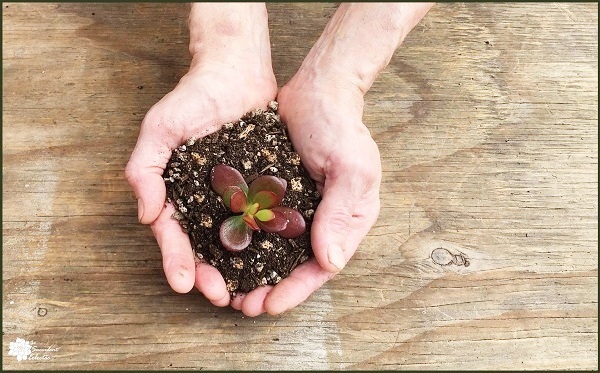
Like all succulents, sedum requires fast-draining, nutritionally lean soil to thrive. Good succulent soil will give your sedum plant an anchor point, make water and nutrients available to their roots, and allow tiny pockets of air to form – crucial for photosynthesis.
How to Water Sedum
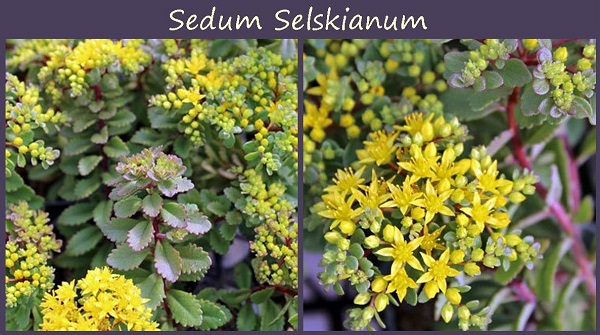
The same adaptations that enable a sedum plant to thrive on little water make it vulnerable to severe damage due to over-watering. Though not as sensitive as some succulents, sedum do require a light hand with the water. The first step to proper watering is choosing the right succulent soil that drains well. Then, water only when the soil is quite dry. For a detailed review of how to water succulents, read here.
My thanks to Mountain Crest Gardens for the use of the Sedum Selskianum photos!
Sedum Light Requirements
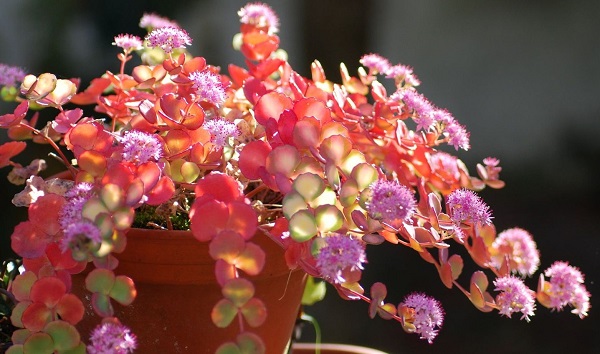
Sedum typically thrive with abundant light. Plan on providing 5-8 hours of sunlight each day for most varieties. A few heavily variegated varieties, like this Sedum Sieboldii Variegatum, prefer dappled shade. Watch the plants to see how they respond to the light you provide and adjust if necessary.
Color Changing Sedum
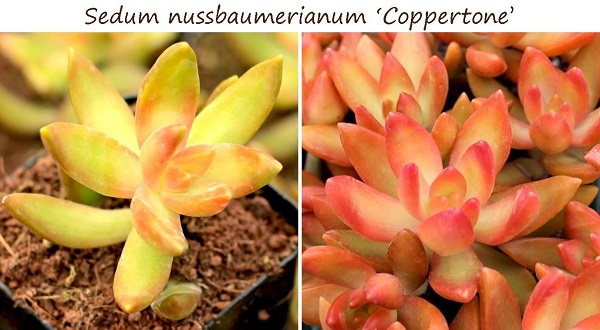
Many varieties of sedum plant change color dramatically throughout the season, or in response to changes in their lighting. This is a natural response to environmental changes in light and temperatures. Often, more sunlight will bring out vivid coloring in your sedum plant. Most green sedum varieties remain green in all conditions. If you specifically want varieties that change color, look for those that already display some color in their foliage. If the name implies a color, like Sedum adolphii ‘Golden Glow’ or Sedum spurium ‘Red Carpet’, it is a good bet that it develops vivid coloring with more sun.
Thank you, Mountain Crest Gardens, for the use of the Sedum nussbaumerianum ‘Coppertone’ photos above!
Are Sedum Toxic to Pets?

Both cold hardy and tender sedum are non-toxic and safe to grow around pets and small children — even if they nibble!.
This symbol denotes pet-safe succulents. For more information about succulents and pets, just click on this image anywhere on this site.
Shopping for Sedum
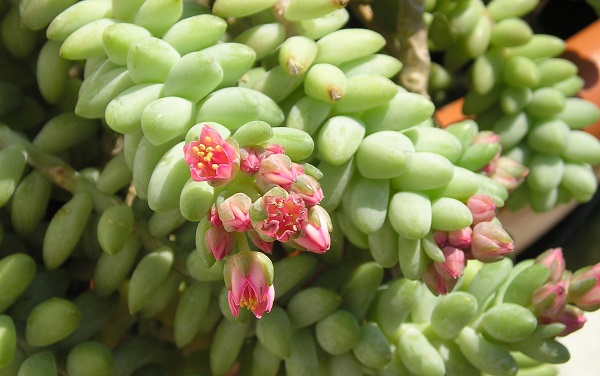
If you are shopping for sedum varieties, always be alert to their hardiness ratings. Mountain Crest Gardens does a nice job of separating cold hardy sedum from the tender sedum varieties. Their selection is quite extensive, with 68 cold hardy varieties, and 27 tender sedum and hybrids!
Sedum are among the very easiest succulents to grow, propagate and enjoy. Will you be planting some in your garden? I would love to know! Please take a moment to leave a comment.
Happy gardening!

P.S. For a complete guide to succulent care, please sign up for my FREE course, 7 Steps to Succulent Success. Thanks so much!

